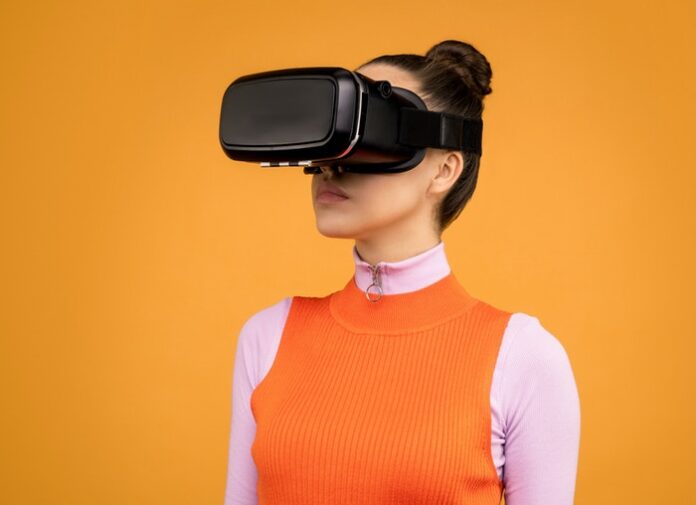The retail industry is showing stable growth; no wonder it is getting harder to surprise the audience. Hence, retailers are looking for fancy ways to take user experience to a higher level and are ready to invest in solutions that go beyond the traditional.
One of the popular ways is to implement Augmented Reality (AR) into online shops. Augmented Reality adds digital elements to the smartphone camera and changes reality by adding three-dimensional objects, sounds, videos, graphics. It helps potential customers to try products without leaving home: imagine the product in their environment, evaluate its appearance in full size, and so on. Not only does it enhance the process of buying and gives in-depth opportunities to try on, but also entertains the customers.
On the face of it, AR technology has been gaining momentum for these years. Now, let’s dig into the reasons for its success.
What Are the Benefits of Augmented Reality in Retail?
In retail, AR serves as a link between the online and offline world and offers advanced e-commerce purchasing experiences, benefiting businesses and customers equally. Let’s go through the advantages it brings for the retail sector.
Raises Brand Awareness & Builds Brand Loyalty
AR is often used as a sales or branding tool to raise awareness. Although AR isn’t a new concept, it is still considered a novelty and brings a wow-effect whenever it is implemented. Important nuance would be not to simply use AR as an eye-catching tool but to provide a truly impressive experience.
According to research, 70% of consumers who experienced a direct interaction with the brand via AR are expected to be more loyal to the brands. Hence, such experience results in brand loyalty and improvement of customer retention.
Enriches Shopping Experience by Gamification
AR can transform a traditional marketing campaign into a game-winning customer engagement experience. By applying game design elements to real-life contexts, gamification allows you to engage customers better with a product and works as a motivation to a quicker purchase. If done right, a gamification strategy hooks consumers and inflames their competitive spirit.
Provides “Try Before You Buy” 3D Product Preview
An AR experience is a never-failing alternative in situations when a demonstration of a real product is impossible. Anything from a product catalog to additional information can be displayed with the help of augmented reality. AR helps online shoppers understand what exactly they’re buying and how precisely the items will suit them.
Decreases Return Rate
Fashion brands are often the hardest hit by returns resulting from over-purchasing to test out different options. AR solutions can remove the guesswork from the shopping process, effectively reducing product returns by up to 35 percent. Giving shoppers a chance to visualize a product and try it on virtually is aimed to make them feel more confident in their purchasing decision. Thus, the need to insure themselves by buying a couple of versions of one product is minimalized.
How Retailers Are Using Augmented Reality: Best Cases
Fashion
In the fashion industry, augmented reality is helping retailers resolve the problems brought by the global pandemic. The ability to try on clothes digitally boosts digital clothing sales, increases conversions, and decreases e-commerce returns. AR clothing try-on makes it possible for clothing and accessories to automatically appear on potential customers as they move in real-time via their devices; when their body moves, the item continues to appear realistic as it responds to the movements, measurements, and environment.
- High-end fashion house Gucci adapted to the recent increase in online shopping and social media usage by offering shoppable AR experiences on Snapchat.
- Global fashion retailer H&M introduced six new AR filters on Instagram specifically to present its collection.
- Jewelry brand Kendra Scott introduced an AR tool enabling customers to virtually try on different earring styles via the web browser. Customers could safely preview the products directly on their ears and purchase them without leaving their homes.
Cosmetics
One of the popular use cases for AR is the cosmetics try-on experience: changing up your appearance with virtual makeup. Top brands like L’Oréal, Estée Lauder, MAC Cosmetics, and Charlotte Tilbury allow consumers to try, for instance, different shades of lipstick or eyeshadow on themselves using their front-facing camera on mobile devices.
AR is also proving to be useful in the physical retail environment, as a sanitary option in the post-pandemic era. Sephora is among the early adopters who allow users to see how various products look on their faces with the help of a “Virtual Artist” feature in its mobile application as well as its in-store mirror. 45 million hits in the first eight weeks proved the AR solution helps eliminate issues that many consumers face while making online cosmetic purchases.
Furniture and Home Decoration
Home furnishing retailers also benefit from Augmented Reality. Customers are given the possibility to completely transform their homes from switching the color of their walls to picking up the texture of the sofa without going to the furniture mall. With the help of AR, any decoration changes can be reviewed only using the smartphone. For instance, IKEA has launched a new AR application that allows users to test IKEA’s products in real-time through a free application that features realistically rendered 3D products.
Automotive
The automotive sector is using AR to drive it to new destinations, never experienced before. AR lets customers try out the cars and their new features and help them decide on the model. It also enhances the buying experiences and creates a closer connection in a customer-company relationship. Only using a smartphone, customers receive different choices and color schemes. AR is a truly win-win solution: it reduces the retailers’ spending on demonstration and space as well.
How to Provide Value Using AR
Smart Tek delivers VR and AR development solutions for businesses. From recent experience, experts designed the AR Jaguar Car Showroom that demonstrates a real-sized luxury vehicle in any location worldwide, providing users a unique chance to check out the desired car without visiting a salon. Their team was challenged to create a highly realistic visualization of the luxury vehicle that enables potential car owners to interact with it as in real life. For this purpose, they created a Jaguar car model that can be viewed through the smartphone camera.
Wrapping Up
Augmented reality is a powerful tool for retail, as it combines traditional retail experience and e-commerce. Implementing it as a sales or marketing tool brings nothing but impressive results both for the business and its audience.
Find a Home-Based Business to Start-Up >>> Hundreds of Business Listings.

















































